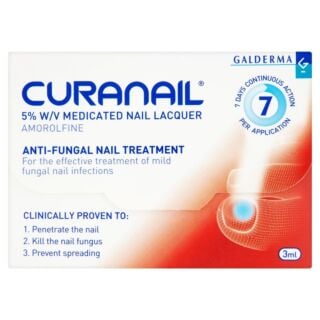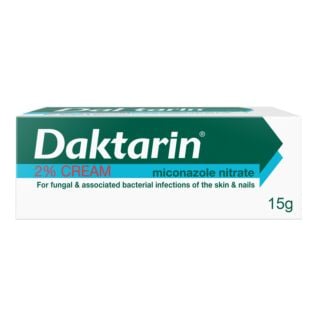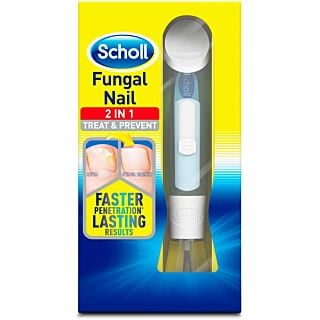How to treat your fungal nail infection

You don’t spend a whole lot of time examining your nails but you have to admit that something’s up.
It’s looking a little bit yellow and, if you’re completely honest with yourself, it smells a bit funky.
Looks like you could have a fungal nail infection, but what does that actually mean?
Let’s take a look at that nail fungus and what you can do to treat it.

What is a fungal nail infection?
Fungal nail infections happen when the natural fungus that lives on your skin (yes, there’s natural fungus that lives on your skin, try not to think about it too much) is given chance to thrive.
This fungus loves warm, moist environments, such as the inside of sweaty shoes, and if it’s allowed to grow under your nail it can cause a fungal nail infection.
This is why fungal nail infections usually affect toenails more often than fingernails, toenails spend more time in the kinds of places that nail fungus just loves.
Fungal nail infections are contagious, so if you come into contact with someone who also has a fungal nail infection or walk barefoot on contaminated surfaces like a gym or pool changing room, you could catch a nasty infection too.

What are the symptoms of a fungal nail infection?
What does a fungal nail infection look like? Well if you’re faint of heart you might not want to look, but we can definitely describe all of the symptoms you can expect to see without offending your eyes.
When you’ve got a fungal nail infection one of the first things you may notice are yellow or white streaks on the tip or corner of the nail.
Typically, a fungal nail infection will begin at the edge of the nail and grow inwards towards the centre, affecting your nail as it goes.
Your nail will often become thick and yellow and may start to lift away from your nail bed, you may also notice that your nail begins to smell.
Over time the nail will become brittle and start to snap or crumble away, in extreme cases the entire nail can be lost.
It’s not a pleasant experience, but luckily there are many different kinds of treatments that can help to keep that infection under control and save your nail.
Don’t want to see what a fungal nail infection looks like? Scroll past this next image as quick as you can, we won’t judge you for it!

What is the best way to treat a fungal nail infection?
There are lots of different ways to treat a fungal nail infection, and if you catch it early your treatment can be simple and effective and can stop your infection from spreading any further.
There are four main kinds of treatment that will keep that infection under control, we’re going to start by looking at the options that are available over the counter from your friendly Chemist 4 U pharmacist.
Antifungal nail polish
One of the most popular treatments for a mild or early stage fungal nail infection is the antifungal nail polish.
Many of these treatments use an ingredient named amorolfine, which kills the fungi causing your infection. Others make the environment around your nail very unfriendly to nail fungus, making sure that it can’t grow and thrive beneath your nail.
These treatments are applied like a clear nail polish or using a simple pen and some can even be worn underneath your normal nail varnish, you wouldn’t even know it was there!
Some of these treatments might need you to file your nail to help to remove the infection more quickly, but others don’t need any filing at all. Check out some of our favourite products to see which one would be the best choice for you.
Nail fungus cream
Another over the counter option your pharmacist might suggest is an antifungal cream.
They would be less likely to offer this treatment as your nails are very thick, especially if you’re suffering with a fungal nail infection, and creams can find it more difficult to penetrate the nail.
However, if you are looking for a cream treatment for your fungal nail infection, your best choice would be Daktarin cream, which can help to send that fungus packing.
Antifungal tablets
If your fungal nail infection has gone far enough that it needs a little extra help to heal, then you might need to speak to your doctor about other solutions.
One option that they will offer you would be antifungal tablets, these are only available with a prescription but they'll help you to combat the nail fungus from the inside out.
When used in combination with an antifungal cream or nail polish, your nail fungus won’t stand a chance.
Laser treatment
If you really want that nail fungus gone, you may consider laser treatment. This uses a laser to destroy your nail fungus, getting rid of it quickly.
However, this treatment can be very expensive and isn’t available on the NHS. On top of that, there is little evidence that laser treatment works as a long-term cure for fungal nail infections, making it a less popular choice.

Home remedies
Some might recommend home remedies for fungal nail infections, with some of the most common suggestions being vinegar, tea tree oil, and Vicks Vaporub.
However, there is no evidence that any of these remedies work or are more effective than the treatments your pharmacist can provide. If you want our advice, we’d tell you to stick with the over the counter treatments.
How long will it take my fungal nail infection to heal?
Unfortunately, treating fungal nail infections isn’t an overnight thing and it can take months to cure your infection.
As you continue your treatment, your nail will begin to grow and if the treatment is successful you’ll see healthy nail growing underneath the infected nail. Over the course of a few months to a year your nail will grow out and you’ll need to trim away the infected nail with nail scissors or clippers.
During this time, you should make sure that you’re the only one using your nail clippers, as you risk passing the infection on to someone else if they use your clippers after you’ve trimmed your infected nail.
To quote one of my favourite songs, when it comes to this treatment you’ve got to have a little patience. Just keep applying your remedy of choice and clipping the infected nail and your nail will recover in time.
Now we know all of our options to treat that pesky fungal nail infection. Remember, if there’s anything you’re not sure about or you have any more burning questions about nail fungus, our dedicated pharmacy team are ready to give you the answers you need.
Give us a call, drop us an email, message us on Facebook, write us a letter, send a carrier pigeon, or even send up a smoke signal and we’ll do our best to answer your questions… although it might take us a while to decode that whole smoke signal thing.









